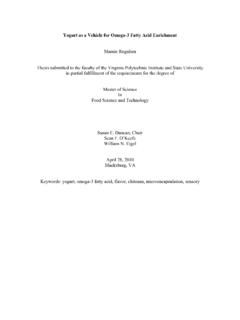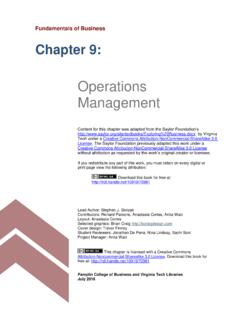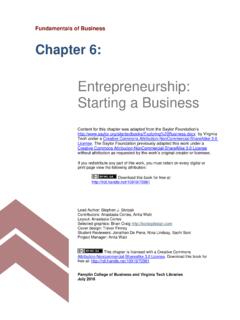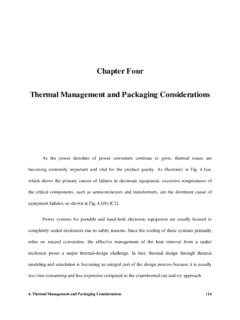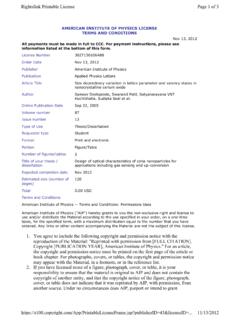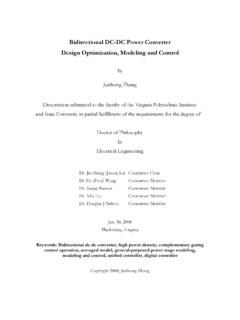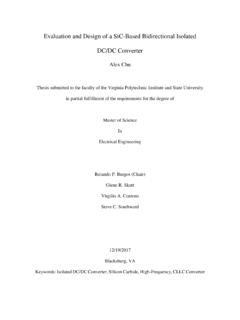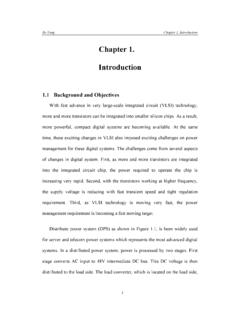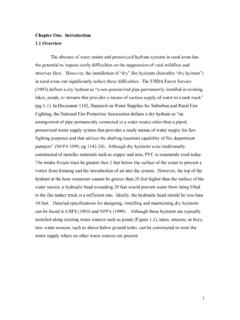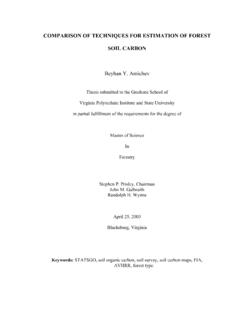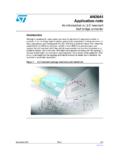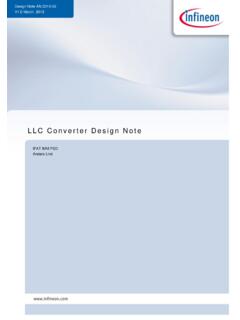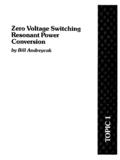Transcription of Topology Investigation for Front End DC/DC Power ...
1 Topology Investigation for Front End DC/DC Power Conversion for Distributed Power System Bo Yang Dissertation submitted to the Faculty of the Virginia Polytechnic Institute and State University in partial fulfillment of the requirements for the degree of Doctor of Philosophy in Electrical Engineering Fred C. Lee, Chairman Dushan Boroyevich Jason Lai Guo-Quan.
2 Lu Alex Q. Huang September 12, 2003 Blacksburg, Virginia Keywords: distributed Power system, DC/DC converter, integrated magnetic, small signal model, resonant converter Copyright 2003, Bo Yang Topology Investigation for Front End DC/DC Power Conversion for Distributed Power System by Bo Yang Fred C. Lee, Chairman Electrical engineering (Abstract) With the fast advance in VLSI technology, smaller, more powerful digital system is available. It requires Power supply with higher Power density, lower profile and higher efficiency.
3 PWM topologies have been widely used for this application. Unfortunately, hold up time requirement put huge penalties on the performance of these topologies. Also, high switching loss limited the Power density achievable for these topologies. Two techniques to deal with hold up time issue are discussed in this dissertation: range winding solution and asymmetric winding solution, the efficiency at normal operation point could be improved with these methods.
4 To reduce secondary rectifier conduction loss, QSW synchronous rectifier is developed, which also helps to achieve ZVS for symmetrical half bridge converter. Although with these methods, the efficiency of Front end DC/DC converter could be improved, the excessive switching loss prohibited higher switching frequency. To achieve the targets, topologies with high switching frequency and high efficiency must be developed. Three resonant topologies: SRC, PRC and SPRC, are been investigated for this application because of their fame of low switching loss.
5 Unfortunately, to design with hold up requirement, none of them could provide significant improvements over PWM converter. iii Although the negative outcome, the desired characteristic for Front end application could be derived. Base on the desired characteristic, a thorough search is performed for three elements resonant tanks. LLC resonant Topology is found to posses the desired characteristic. From comparison, LLC resonant converter could reduce the total loss by 40% at same switching frequency.
6 With doubled switching frequency, efficiency of LLC resonant converter is still far better than PWM converters. To design the Power stage of LLC resonant converter, DC analysis is performed with two methods: simulation and fundamental component simplification. Magnetic design is also discussed. The proposed integrated magnetic structure could achieve smaller volume, higher efficiency and easy manufacture. To make practical use of the Topology , over load protection is a critical issue.
7 Three methods to limit the stress under over load situation are discussed. With these methods, the converter could not only survive the over load condition, but also operate for long time under over load condition. Next small signal characteristic of the converter is investigated in order to design the feedback control. For resonant converter, state space average method is no longer valid. Two methods are used to investigate the small signal characteristic of LLC resonant converter: simulation and extended describing function method.
8 Compare with test results, both methods could provide satisfactory results. To achieve both breadth and depth, two methods are both used to reveal the myth. With this information, compensator for feedback control could be designed. Test circuit of LLC resonant converter was developed for Front end DC/DC application. With LLC Topology , Power density of 40W/in3 could be achieved compare with 15W/in3 for PWM converter. iv To My Wife Qiaoqiao Bo Yang Acknowledgement vACKNOWLEDGMENT I would like to thank my advisor, Dr.
9 Fred C. Lee. Till today, I am still amused by his great intuition, broad knowledge and accurate judgment. The most precious thing I learned from him is the attitude toward research, which can be applied to every aspects of life too. Without his guidance and challenging, I will never be able to achieve this. I am grateful to my committee: Dr. Dushan Boroyevich, Dr. Jason Lai, Dr. Alex Q. Huang and Dr. Guo Q. Lu, and Dr. Dan Y. Chen for their valuable suggestions and numerous help.
10 It has been a great pleasure to work in the Center for Power Electronics Systems (CPES). I would like to acknowledge the CPES administrative and management staff, Ms. Teresa Shaw, Ms. Linda Gallagher, Ms. Trish Rose, Ms. Ann Craig, Ms. Marianne Hawthome, Ms. Elizabeth Tranter, Ms. Lesli Farmer, Mr. Robert Martin, Mr. Steve Z. Chen, Mr. Dan Huff, Mr. Gary Kerr, and Mr. Jamie Evans for their countless help. I would like to thank my colleagues, Dr.
